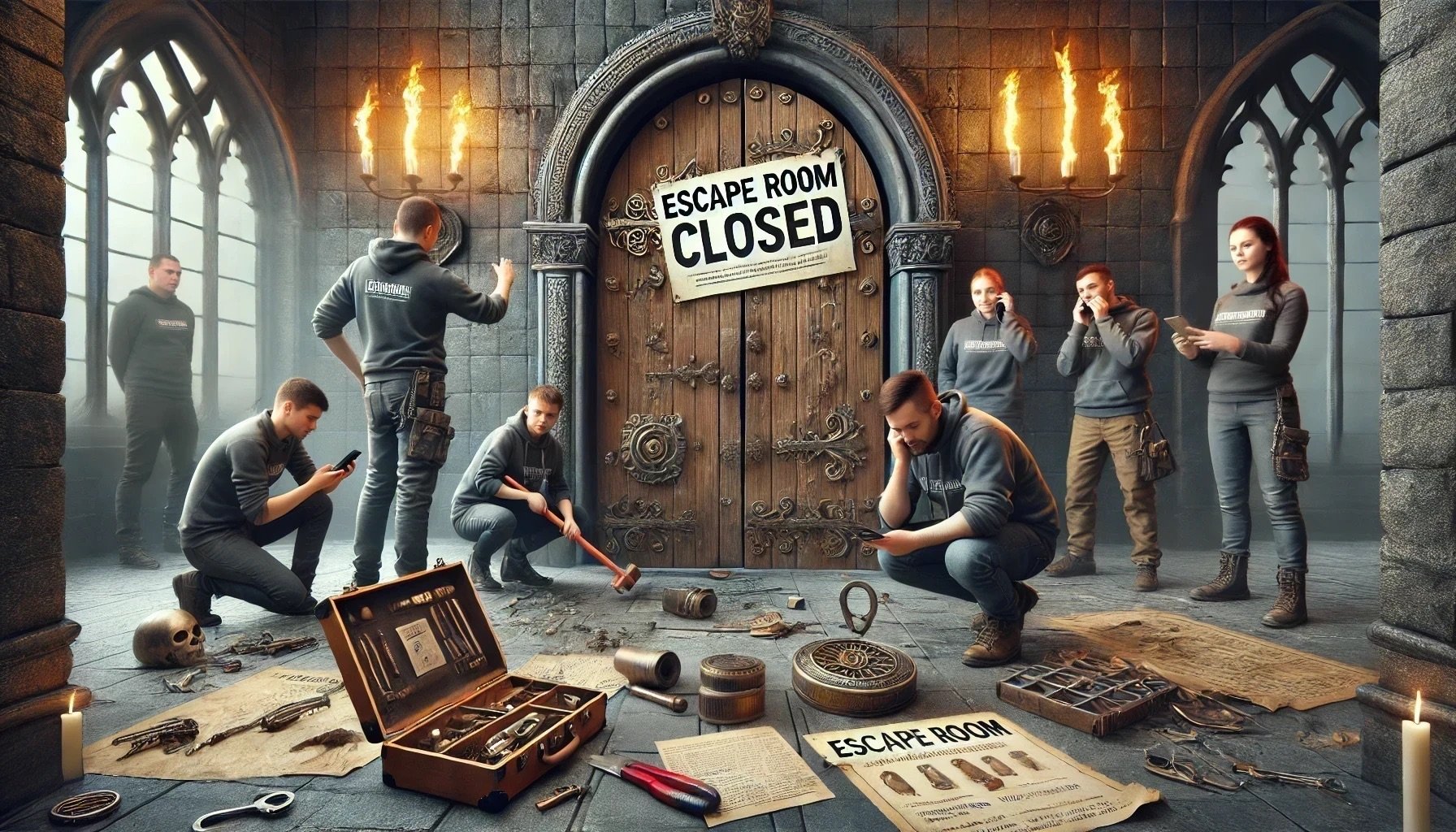The Hidden Costs of Running an Escape Room Business (And How to Manage Them)
Hello, escape room owners and enthusiasts-to-be-owners!
When you think about running an escape room, your mind likely jumps to designing immersive puzzles, coordinating staff, and managing bookings. But beneath the surface lies a maze of hidden costs that, if left unchecked, can creep up on your profits.
In this post, we’ll explore the often-overlooked expenses of running an escape room business and share practical strategies to manage them effectively.
Maintenance and repairs
Escape rooms are hard-wearing environments. From enthusiastic players to the inevitable wear and tear of your props, technology, and decor, your rooms will need constant attention.
Why it’s a hidden cost:
Maintenance can be unpredictable. A single prop failure or a damaged piece of equipment can disrupt operations, lead to issuing refunds or vouchers, and turning away customers due to a broken game.
How to manage it:
Set aside a maintenance budget as part of your overall financial plan.
Regularly inspect rooms for issues to address problems early.
Keep a set of spare props ready to go for quick replacements.
Staff coordination and turnover
Your team is vital to your business, especially your Game Masters who ensure players have a seamless experience. Coordinating staff schedules, managing payroll, and dealing with turnover can be a costly and time-consuming process.
Why it’s a hidden cost:
Frequent staff turnover leads to ongoing recruitment, training, and onboarding expenses, while poorly coordinated schedules can result in overstaffing or understaffing.
How to manage it:
Use scheduling software to optimise shifts and prevent overstaffing.
Offer flexible working conditions to reduce turnover.
Create a detailed onboarding plan to minimise the time and cost of training new staff.
Software subscriptions
From booking platforms to marketing tools, escape room businesses often rely on various software subscriptions. These costs can accumulate quickly, especially if you’re using multiple tools.
Why it’s a hidden cost:
It’s easy to forget about subscriptions, including graphic design apps, analytics tools, and even random licenses you no longer use. These small fees can quietly add up to a significant expense.
How to manage it:
Regularly review your software stack to cancel unused subscriptions.
Opt for bundled tools or free alternatives where possible.
Consider annual plans instead of monthly subscriptions to save on recurring costs.
Tax obligations and compliance
Taxes are unavoidable, but the way you manage them can make a big difference in your cash flow.
Why it’s a hidden cost:
Many owners forget to set aside money for taxes like quarterly VAT or overspend on money that technically belongs to the taxman. Late filings or incorrect submissions can result in penalties, adding even more to your expenses.
How to manage it:
Maintain detailed records of all income and expenses.
Set aside a percentage of your revenue every month specifically for taxes.
Consult with a professional (like me!) to ensure compliance and maximise deductions.
Marketing expenses
Attracting new customers is essential, but marketing can quickly become a financial black hole if not managed carefully.
Why it’s a hidden cost:
Owners often overspend on ineffective marketing strategies or forget to track the return on investment (ROI) of their campaigns.
How to manage it:
Focus on cost-effective strategies like social media, partnerships, and referral programmes.
Use analytics tools to measure ROI and adjust your efforts accordingly.
Set a specific budget for marketing and stick to it.
Unexpected expenses
Every escape room owner will face surprises, from emergency repairs to compliance with new regulations.
Why it’s a hidden cost:
These expenses are unpredictable, and without a financial buffer, they can strain your budget.
How to manage it:
Build an emergency fund to cover unexpected costs.
Plan for downtime during repairs or slow seasons by adjusting your budget accordingly.
Use historical data to anticipate potential risks and create contingency plans.
Conclusion: Keep your costs under control
Running an escape room business is as much about managing finances as it is about creating fun and immersive experiences. By identifying and addressing these hidden costs, you can protect your profits and keep your business thriving.
If you’re ready to get a handle on your expenses and streamline your financial processes, let’s chat! I’ll help you uncover hidden costs and create a plan that works for your escape room business.
Chi / Sam
Your Escape Room Bookkeeper

